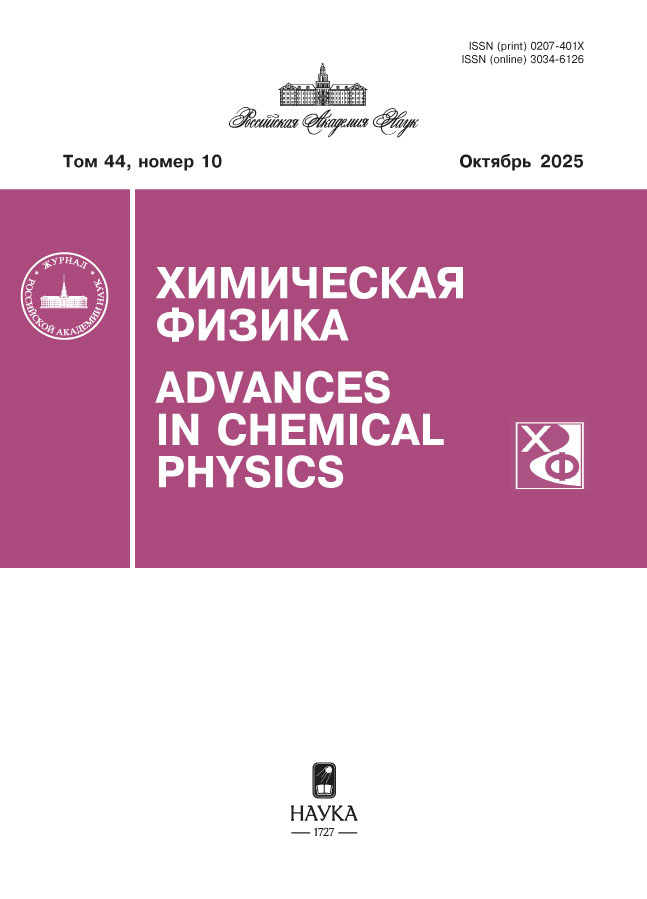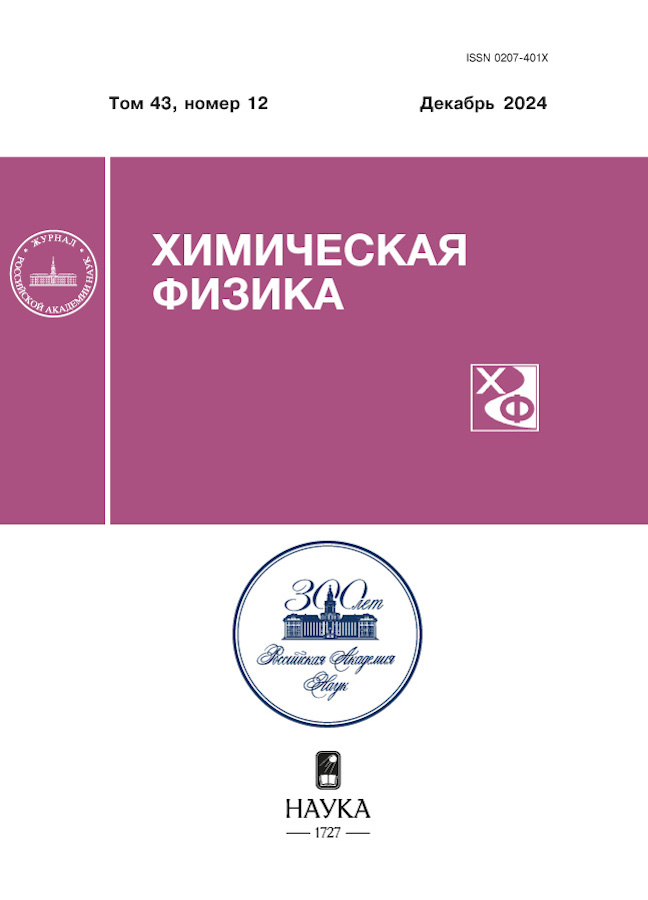Универсальный метод определения интенсивности электрон-фононного взаимодействия в фотосинтетических пигментах с помощью эволюционного алгоритма оптимизации
- Авторы: Курков В.А.1,2, Чесалин Д.Д.1, Разживин А.П.3, Шкирина У.А.1,4, Пищальников Р.Ю.1
-
Учреждения:
- Институт общей физики им. А.Н. Прохорова Российской академии наук
- Московский физико-технический институт
- МГУ им. М.В. Ломоносова
- Московский государственный университет им. М.В. Ломоносова
- Выпуск: Том 43, № 12 (2024)
- Страницы: 40-52
- Раздел: Строение химических соединений, квантовая химия, спектроскопия
- URL: https://kld-journal.fedlab.ru/0207-401X/article/view/684176
- DOI: https://doi.org/10.31857/S0207401X24120041
- ID: 684176
Цитировать
Полный текст
Аннотация
Моделирование оптического отклика фотосинтетических пигментов – неотъемлемая часть исследования фундаментальных физических процессов взаимодействия многоатомных молекул с внешним электромагнитным полем. В отличие от ab initio методов расчета основного и возбужденного состояний молекулы, применение полуклассических квантовых теорий позволяет не учитывать полный набор конфигураций электронов и атомов, а использовать характеристические функции, такие как спектральная плотность, для вычисления спектров поглощения. Основной недостаток такого подхода – постоянное сопоставление вычисленных и экспериментальных спектров и, как следствие, необходимость обосновывать единственность полученных параметров исследуемой системы и оценивать их статистическую значимость. Чтобы улучшить качество расчета оптического отклика, в работе использован эвристический эволюционный алгоритм оптимизации, который минимизирует разницу между измеренными и теоретическими спектрами, определяя наиболее подходящий набор модельных параметров. Показано, что при использовании в качестве примера спектров фотосинтетических пигментов, измеренных в разных растворителях, оптимизация моделирования позволила получить хорошее соответствие расчетных и экспериментальных данных и однозначно определить коэффициенты электрон-фононного взаимодействия для электронных возбужденных состояний хлорофилла, лютеина и β-каротина
Полный текст
Об авторах
В. А. Курков
Институт общей физики им. А.Н. Прохорова Российской академии наук; Московский физико-технический институт
Email: rpishchal@kapella.gpi.ru
Россия, Москва; Долгопрудный
Д. Д. Чесалин
Институт общей физики им. А.Н. Прохорова Российской академии наук
Email: rpishchal@kapella.gpi.ru
Россия, Москва
А. П. Разживин
МГУ им. М.В. Ломоносова
Email: rpishchal@kapella.gpi.ru
Научно-исследовательский институт физико-химической биологии им. А.Н. Белозерского
Россия, МоскваУ. А. Шкирина
Институт общей физики им. А.Н. Прохорова Российской академии наук; Московский государственный университет им. М.В. Ломоносова
Email: rpishchal@kapella.gpi.ru
Department of Mechanics and Mathematics
Россия, Москва; МоскваР. Ю. Пищальников
Институт общей физики им. А.Н. Прохорова Российской академии наук
Автор, ответственный за переписку.
Email: rpishchal@kapella.gpi.ru
Россия, Москва
Список литературы
- Jang S.J., Mennucci B. // Rev. Mod. Phys. 2018. V. 90. № 035003. https://doi.org/10.1103/RevModPhys.90.035003
- Mirkovic T., Ostroumov E.E., Anna J.M. et al. // Chem. Rev. 2017. V. 117. № 2. P. 249. https://doi.org/10.1021/acs.chemrev.6b00002
- Горохов В.В., Нокс П.П., Корватовский Б.Н. и др. // Хим. физика. 2023. Т. 42. № 6. С. 63. https://doi.org/10.31857/S0207401X23060055
- Blankenship R. E. Molecular Mechanisms of Photosynthesis. 2nd ed., Oxford: Wiley-Blackwell, 2014.
- Renger T., Madjet M.E.A., Busch M.S.A. et al. // Photosynth. Res. 2013. V. 116. P. 367. https://doi.org/10.1007/s11120-013-9893-3
- Черепанов Д.А., Милановский Г.Е., Айбуш А.В. и др. // Хим. физика. 2023. Т. 42. № 6. С. 77. https://doi.org/10.31857/S0207401X23060031
- Renger T. // J. Phys. Chem. B. 2021. V. 125. № 4. P. 6406. https://doi.org/10.1021/acs.jpcb.1c01479
- Novoderezhkin V. I., Romero E., Dekker J.P. et al. // ChemPhysChem. 2011. V. 12. № 3. P. 681. https://doi.org/10.1002/cphc.201000830
- Bruggemann B., Sznee K., Novoderezhkin V. et al. // J. Phys. Chem. B. 2004. V. 108. № 35. P. 13536. https://doi.org/10.1021/jp0401473
- Brixner T., Hildner R., Kohler J. et al. // Adv. Energy Mater. 2017. V. 7. № 16. P. 1700236. https://doi.org/10.1002/aenm.201700236
- Croce R., van Amerongen H. // Nat. Chem. Biol. 2014. V. 10. P. 492. https://doi.org/10.1038/nchembio.1555
- Черепанов Д.А., Милановский Г.Е., Надточенко В.А. и др. // Хим. физика. 2023. Т. 42. № 6. С. 88. https://doi.org/10.31857/S0207401X23060043
- Nelson T.R., White A.J., Bjorgaard J.A. et al. // Chem. Rev. 2020. V. 120. № 4. Р. 2215. https://doi.org/10.1021/acs.chemrev.9b00447
- Cremer D., Pople J.A. // J. Amer. Chem. Soc. 1975. V. 97. № 6. P. 1354. https://doi.org/10.1021/ja00839a011
- Ditchfield R., Hehre W.J., Pople J.A. // J. Chem. Phys. 1971. V. 54. № 2. P. 724. https://doi.org/10.1063/1.1674902
- Хренова М.Г., Поляков И.В., Немухин А.В. // Хим. физика. 2022. Т. 41. № 6. С. 65. https://doi.org/10.31857/S0207401X22060061
- Mukamel S. Principles of Nonlinear Optical Spectroscopy. New York, Oxford: Oxford University Press, 1995.
- Chesalin D.D., Kulikov E.A., Yaroshevich I.A. et al. // Swarm Evol. Comput. 2022. V. 75. № 101210. https://doi.org/10.1016/j.swevo.2022.101210
- Storn R. // IEEE Trans. Evol. Comput. 1999. V. 3. № 1. P. 22. https://doi.org/10.1109/4235.752918
- Storn R., Price K. // J. Global Optim. 1997. V. 11. P. 341. https://doi.org/10.1023/A:1008202821328
- Opara K.R., Arabas J. // Swarm Evol. Comput. 2019. V. 44. P. 546. https://doi.org/10.1016/j.swevo.2018.06.010
- Гудков С.В., Саримов Р.М., Асташев М.Е. и др. // УФН. 2024. Т. 194 С. 208. https://doi.org/10.3367/UFNr.2023.09.039577
- Pishchalnikov R.Y., Yaroshevich I.A., Zlenko D.V. et al. // Photosynth. Res. 2023. V. 156. № 1. P. 3. https://doi.org/10.1007/s11120-022-00955-2
- Pishchalnikov R.Y., Yaroshevich I.A., Slastnikova T.A. et al. // Phys. Chem. Chem. Phys. 2019. V. 21. № 46. Р. 25707. https://doi.org/10.1039/c9cp04508b
- Balevičius V., Abramavicius D., Polívka T. // J. Phys. Chem. Lett. 2016. V. 7. № 17. P. 3347. https://doi.org/10.1021/acs.jpclett.6b01455
- Uragami C., Saito K., Yoshizawa M., Molnar P. et al. // Arch. Biochem. Biophys. 2018. V. 650. P. 49. https://doi.org/10.1016/j.abb.2018.04.021
Дополнительные файлы

















